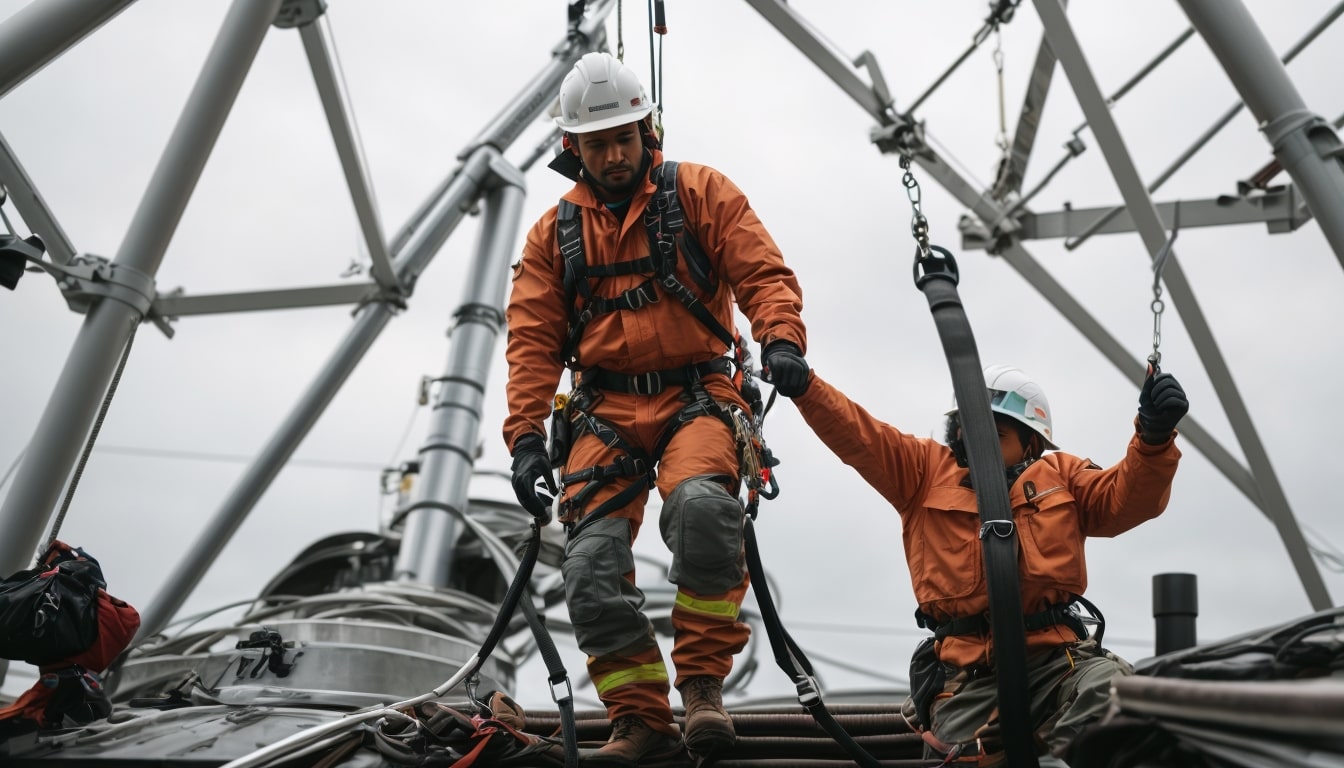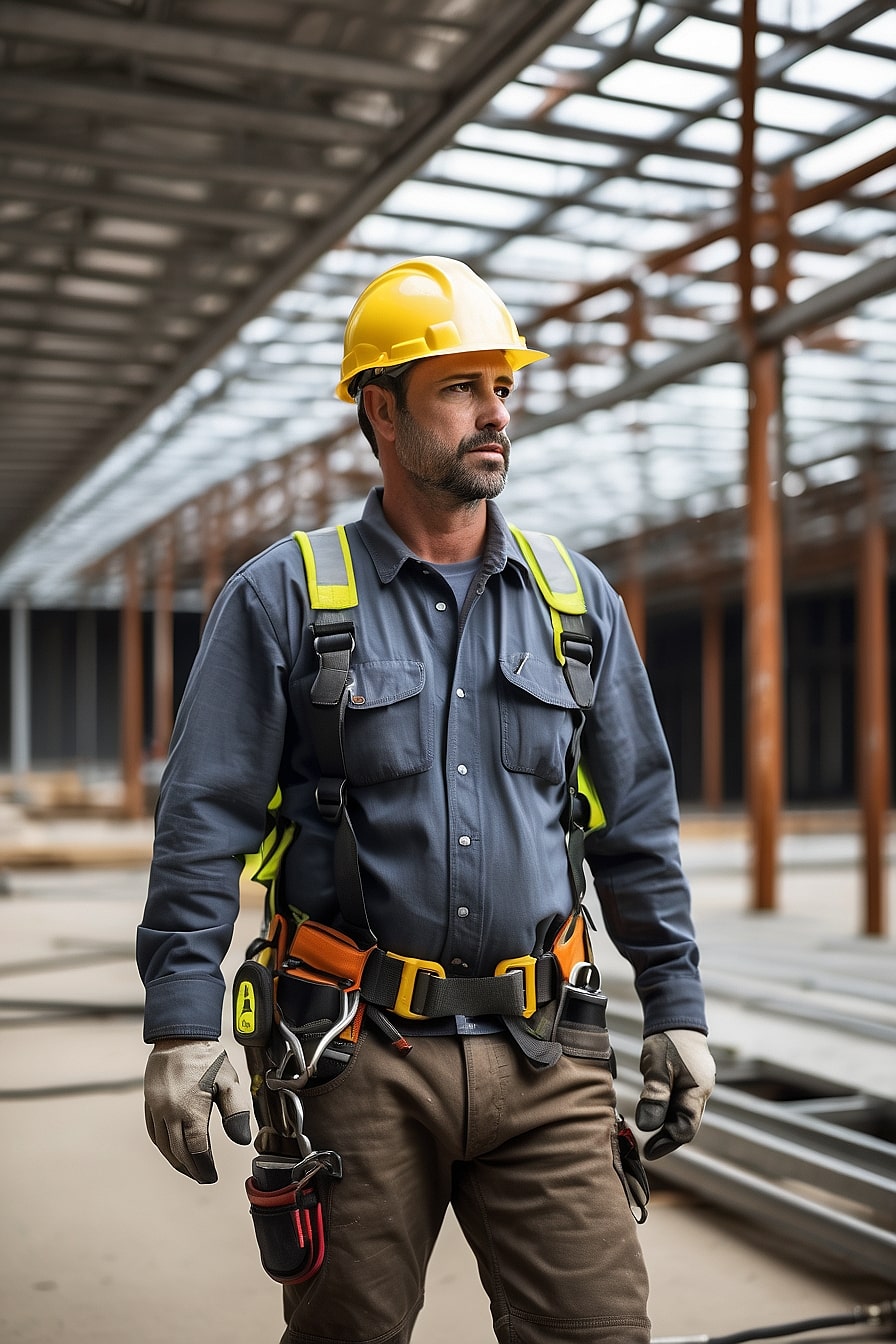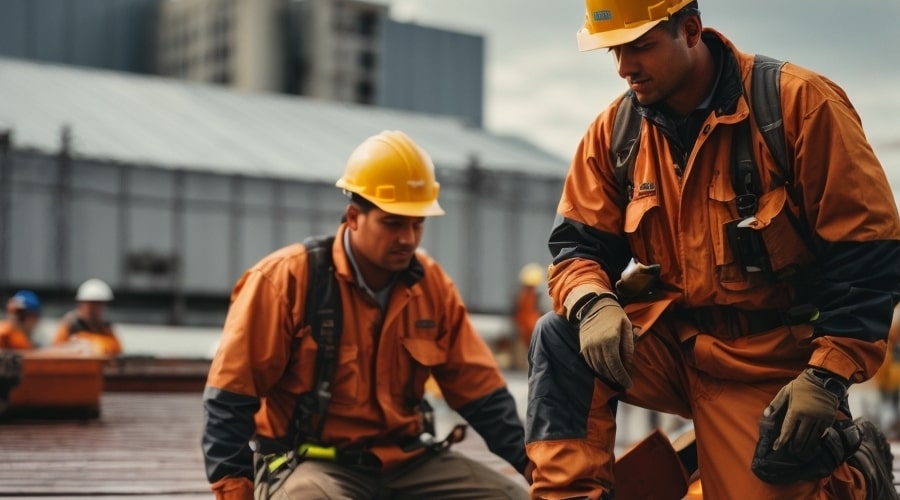Most Frequently Asked Fall Protection Questions
Posted by Howie Scarboro - CEO Fall Protection Distributors, LLC on Jan 26th 2024
Introduction
Safety should always be a priority especially when working at heights. For roofing contractors, it is crucial to prioritize fall protection training and follow OSHA guidelines to prevent accidents and ensure the well-being of workers. This blog post addresses common questions related to fall protection, providing you with the knowledge to navigate OSHA regulations and make informed decisions regarding safety equipment for your projects.
Why is Fall Protection Important?
Every year numerous workers tragically lose their lives and suffer life altering injuries due to falls. Falls are the leading cause of construction fatalities. This fact poses a significant risk in the construction industry particularly for those working on roofs. Fall protection violations consistently rank among OSHA’s ten most frequent complaints. This issue goes beyond regulation; it has profound financial consequences.
According to national data, in 2021 there were 5,190 workplace injuries reported, with 680 associated specifically with falls from height.

Roofers face a much higher chance of fatalities from falls compared to workers in other construction industries. The financial implications of fall injuries are significant, with an average cost exceeding $27,000 per incident for expenses, lost wages, and reduced productivity. However, the consequences go beyond finances. This can result in lasting impacts on workers and their families. Emotional trauma, disabilities, and diminished earnings can devastate an injured worker’s family.
To ensure worker safety and well-being, it is crucial to prioritize fall protection measures that extend beyond compliance with OSHA regulations. Investing in equipment such as harnesses, lifelines and anchor points, along with routine training creates a culture of safety that permeates every aspect of your construction site.
Who Is Responsible For Fall Protection?
Determining who is responsible for fall protection primarily rests on the employer’s shoulders. They hold the duty of ensuring a work environment by adhering to OSHA regulations and following guidelines specifically designed for working at heights. They are required by OSHA to not only provide the right equipment for the job, but also to properly train the employees in the correct way to use that equipment.
According to OSHA 29 CFR 1910.132(a), employers bear full responsibility for providing a secure workplace without any ambiguity. This means ensuring the safety of your workers from falls from height by using these guidelines.
Identifying and assessing fall hazards;
Conduct thorough risk assessments to identify any potential dangers specific to the roof area.
Implementing appropriate fall protection systems;
Maintain fall protection equipment that complies with OSHA standards, such as harnesses, lifelines and anchor points.
Providing training for your workforce;
Ensure that all employees working at heights receive training on safe work practices and how to effectively use fall protection systems.
Supervising and enforcing safety protocols;
Continuously monitor compliance with safety procedures. Promptly address any violations.

What Are Areas of Risk on Roofs?
Although falls can happen anywhere on a roof, certain areas require focused attention due to elevated risks;
Skylights and roof openings;
These pose a direct risk of falls through the openings. Installing swinging safety gates or secure covers is crucial for maintaining safety.
Roof edges;
Falls from the edge of the roof are particularly concerning. Installing guardrails or fixed anchor points for fall protection systems is essential for worker safety.
Ladders and access points;
Ladders used for accessing the roof as temporary walkways, on the roof itself should have proper guardrails and secure footing to prevent falls.
What Are OSHA’s Fall Protection Requirements?
The Four Foot Rule;
When Fall Protection Comes into Play (29 CFR 1926.501(b)(1))
According to OSHA regulation 29 CFR 1926.501(b)(1) whenever work takes place four feet or more above the ground, fall protection becomes mandatory. This rule applies without any exceptions. Whether it involves inspecting equipment, installing panels, or simply walking across the roof. Proper fall protection equipment like harnesses, lifelines and anchor points must be readily available and used correctly.

Beyond the Minimum;
Delving Deeper into Fall Protection Standards (29 CFR 1926.502)
While the four foot rule sets the requirement, OSHA further explains in 29 CFR 1926.502 guidelines for different situations;
Low slope roofs (less than 5 degrees);
Gentle sloped roofs require a fall arrest system with harnesses and lifelines.
Steeper slopes (5 degrees or more);
Employers have the option of using a fall restraint system that prevents workers from reaching the edge where they could potentially fall.
In cases such as inspections or assessments where continuous fall protection might impede work progress OSHA allows temporary deviations as long as alternative safety measures are, in place.
Remember that these are some points to keep in mind.
Each project is unique. It’s essential to understand the OSHA regulations to ensure full compliance. This includes Subpart M and related standards for roof work. If you need assistance, don't hesitate to seek guidance from safety professionals who can provide an understanding of your fall protection responsibilities.
By following OSHA guidelines, you can establish a secure work environment for your standing seam roof project. Remember, prioritizing fall protection isn't just an obligation; it's a commitment to ensuring the well-being of your workers so they can return home safely every day.
What is The Right Fall Protection Equipment for Roofers?
Various options are available that comply with OSHA standards and help protect workers;
Full body harnesses;
These distribute fall forces and offer attachment points for lifelines. Make sure to choose harnesses specifically designed for roofing tasks and ensure fit and adjustments for each worker.
Lifelines;
Shock absorbing lanyards or self retracting lifelines connect the harness to an anchor point reducing the impact of a fall.
Anchor points;
Fixed anchor points installed on the roof structure provide secure attachment locations, for lifelines. It's crucial to select an anchorage system that suits your roof type in terms of weight capacity and compatibility.
What Are The Consequences Of Not Complying With OSHA Regulations?
This goes beyond checkboxes. It's about safeguarding your most valuable assets…your employees. Ignoring fall protection requirements when working at height can have repercussions both in terms of finances and human well-being.
The Sting of Penalties; OSHA Fines Can Have an Impact
OSHA takes fall protection violations seriously. Employers can face fines for each violation under 29 USC 666(a). These fines vary depending on the nature of the violation;
Violations that pose a threat; Up to $13,653 per violation.
Repeat offenses; Up to $136,530 per violation for known hazards.
Intentional disregard for safety rules; Up to $136,530 per violation potentially leading to charges in cases.
These fines can quickly strain your project’s budget while also tarnishing your company’s reputation. However, the financial implications are just a fraction of the cost of non-compliance.
In Conclusion;
Ensuring fall protection measures are in place is not a choice, but an absolute necessity. To ensure the safety of your employees and the success of your roofing projects, it is important to have a grasp of OSHA regulations. The proper use of equipment combined with effective safety management can help ensure an accident free workplace. Keep in mind that prioritizing safety protects both the workforce and the success of the company.

